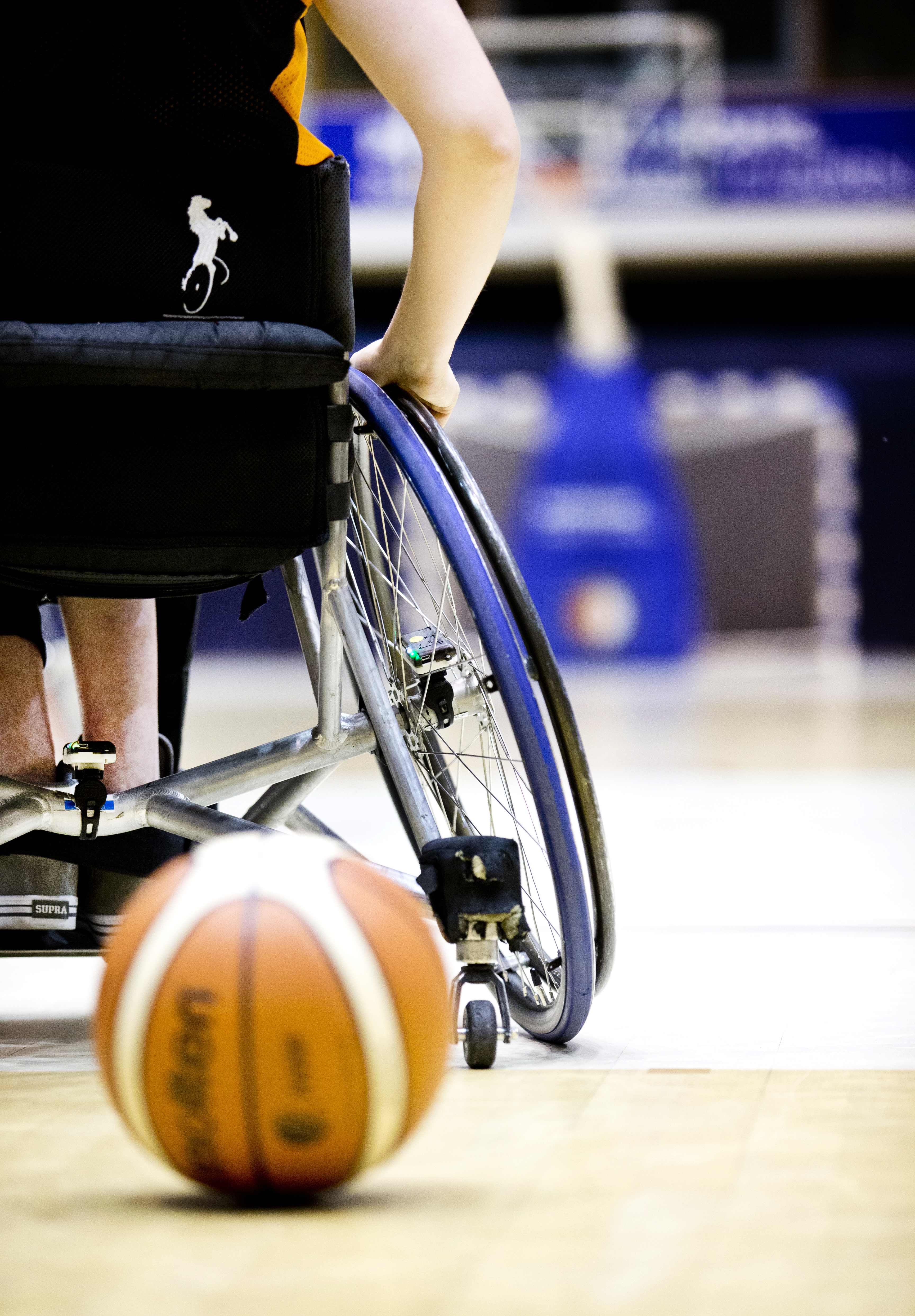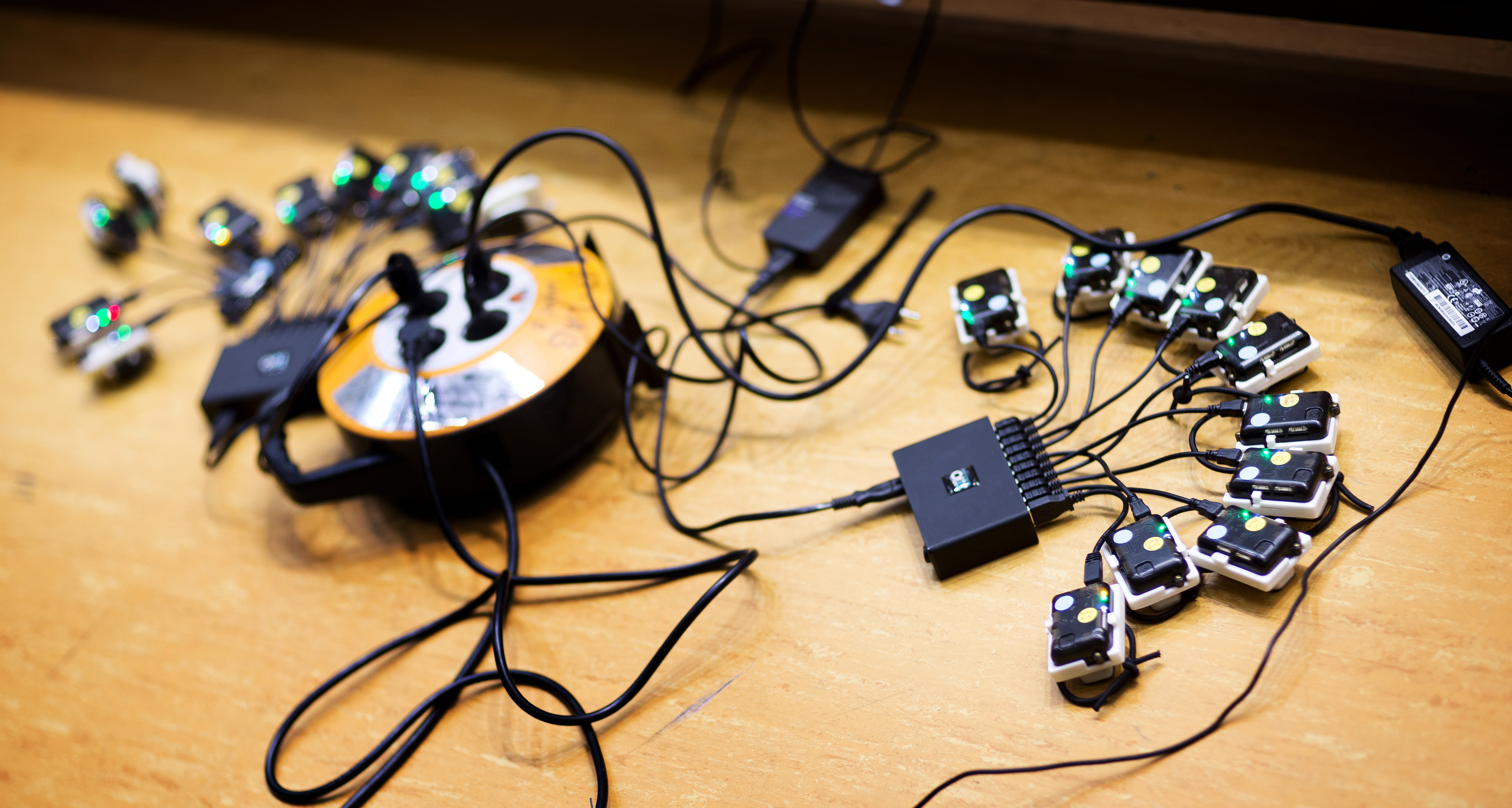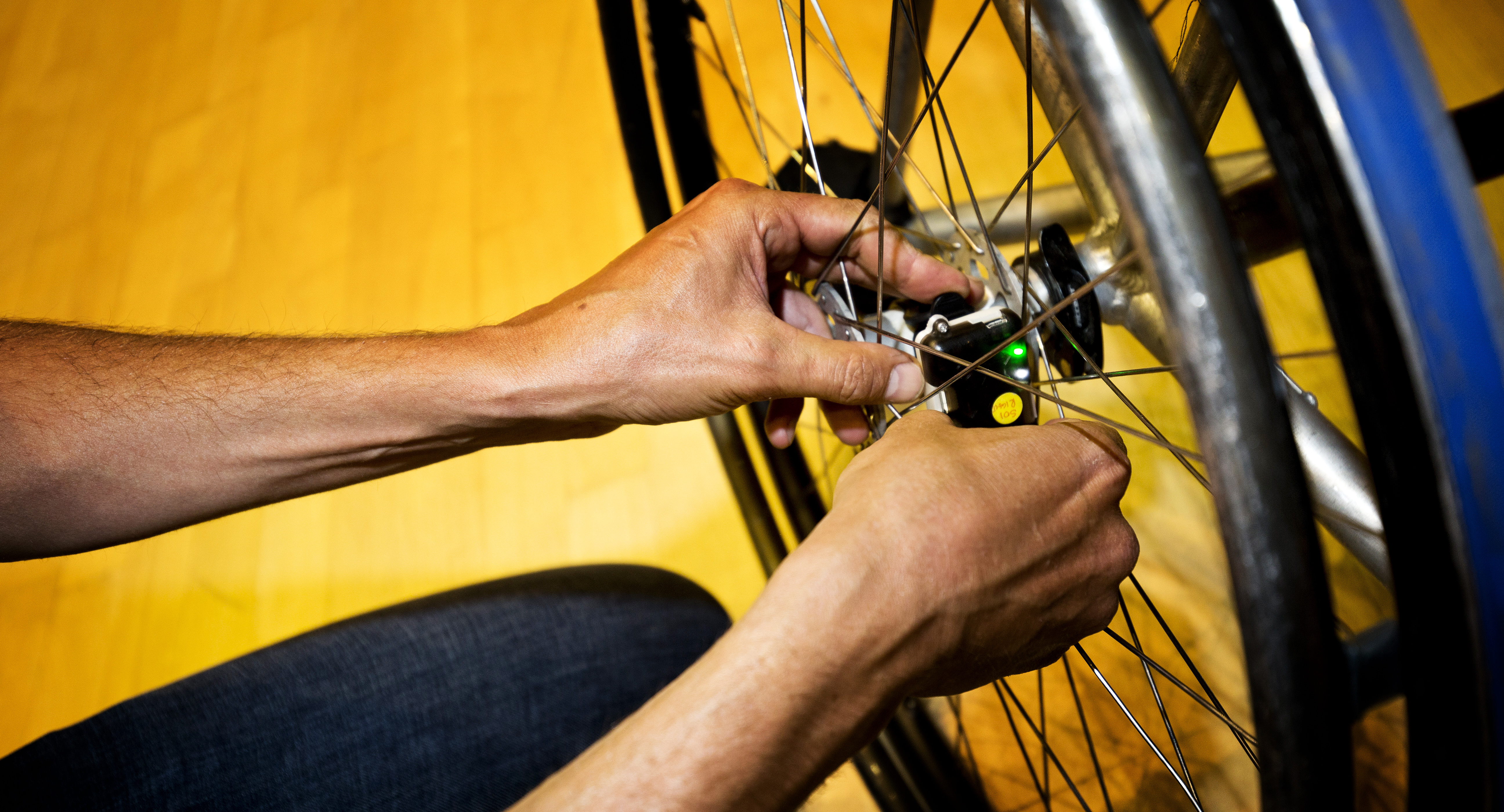Project WheelPower
Power in sports
Power, what is that? In sports, power, usually expressed in Watts or joules per second, is an objective measure of the amount of work that is produced per second. In very simple terms, power resembles how much effort you put in. If you produce much power, the tank will empty faster. You can compare this with the fuel in a car (or the battery in an electric car). Power is the speed at which the tank empties.
An example: ''If you let the engine running, the tank will get emptier. When the tyres are soft, the tank empties faster. When going uphill, the tank empties faster than when going downhill at the same speed. When the car is driving at 130 km/h, the tank empties faster than when it is driving at 80 km/h. If the car is standing still, it will only use the amount of fuel necessary to keep the engine warm. And so it is with the human body!’’
In sports, we often consider external power, which is only the part of your energy (or fuel) that is actually converted into movement (per second). The part that keeps the engine warm is not included. The external power of a wheelchair+athlete (or car+motor) is calculated by multiplying the external forces (air resistance, rolling resistance) by the speed.
This external power can be used to say something about a.o. training load (e.g. to prevent overtraining), fitness (are my athletes fit enough to last the whole game), pacing (how can I best pace my 200m sprint or 10km), propulsion technique (e.g. to improve efficiency by achieving a higher speed with the same power) and wheelchair settings (such as tyre pressure or seat position). For a top athlete or top sports coach, these are very important matters. So, lets go for it!
Comparison with road cycling
While the power meter became an integral part of professional cycling years ago, ambulatory power measurement is not yet accessible to wheelchair athletes. You might think, how can this be so difficult? This is partly due to the following two differences between road cycling and wheelchair riding:
1) Bicycles have a central point where all force is transmitted to the rear wheel, which is done by the pedal. By making a power meter in the crank axle, we know which power the cyclist produces. In a wheelchair, however, you don't have a central point where all forces of the user are transmitted to the system (instead the push rim of a wheelchair is connected to the wheels at six different locations), so the power on the wheel cannot be measured that simple. However, there are power meters for wheelchairs that work in this way. They introduce a central point by means of a modified hoop that engages with the wheel at a single point, namely the wheel axis (just like in bicycles). However, these power meters also add extra weight and are currently not offered commercially.
2) Unlike bicycles, a wheelchair has two different wheel sizes, small ones at the front and large ones at the back. Because of this, the motions and posture of the wheelchair user has a great influence on the total rolling resistance. In other words, if you lean forward, you come to a stop sooner than if you sit upright. As a wheelchair user is constantly moving forwards and backwards, the rolling resistance is also constantly varying.
As mentioned earlier, power is the product of force (F) and velocity (v). The velocity of a wheelchair can be determined accurately already (due to the effort of Rienk van der Slikke, who promoted on this topic at the TU Delft). As one can read in point 1 above, determining the force produced by a wheelchair user is not straightforward. An alternative is to determine the summed propulsion forces minus the summed drag forces, as is equal to mass times acceleration (F=m*a). Unfortunately, determining drag forces of a wheelchair is also difficult, as can be read in point 2 above. So how to proceed?
That is a good question. Promovenda Marit van Dijk is trying to find an answer on this question on behalf of the TU Delft, such that the sensors that are already used in multiple wheelchair sports, may soon be used to provide power data as well!
The bigger picture: Project WheelPower
This research is part of a bigger project: WheelPower. The main aim of WheelPower is to improve wheelchair sport performance by optimizing the power produced by athletes during trainings and competitions. By continuously monitoring power during trainings and competitions, combined with real-time feedback on this, wheelchair athletes and their coaches can immediately use the results of objective field- and lab measurements to their advance. Rienk van der Slikke promoted two years ago on performance measuring in wheelchair sports at the TU Delft. On behalf of NOC*NSF, TU Delft and the Hague University of Applied Sciences (Human Movement Technology) van der Slikke is assigned as post-doc with the aim to develop a smartphone app to measure and give feedback on wheelchair performance. On behalf of the TU Delft, Marit van Dijk works as a promovenda on developing a field-based power meter. The method to measure wheelchair performance by means of inertial sensors, which is developed by van der Slikke, will be extended such that the power produced by the wheelchair athlete can also be monitored. On behalf of the UMCG Groningen, Rowie Janssen works as a promovenda to develop wheelchair specific physical tests on a Esseda wheelchair ergometer. In this project, more insight is obtained in the power produced by the athlete in a controlled lab setting. With these three projects, the (pre)conditions will be created to lift Paralympic wheelchair sport to a higher level.
WheelPower is supported by (Sport en Beweging 2018) under project number 546003002. This project, named ‘WheelPower: wheelchair sports and data science push it to the limit’ a cooperative effort between TU Delft, UMCG, THUAS, VU Amsterdam, rehabilitation centre Reade Amsterdam, Amsterdam Institute of Sport Science (AISS), Gehandicaptensport Nederland, Sportinnovator Centrum Groningen, Sportcentrum Papendal in cooperation with several sports federations collected under the umbrella of NOC*NSF. More information? http://www.wheelpower.online/




